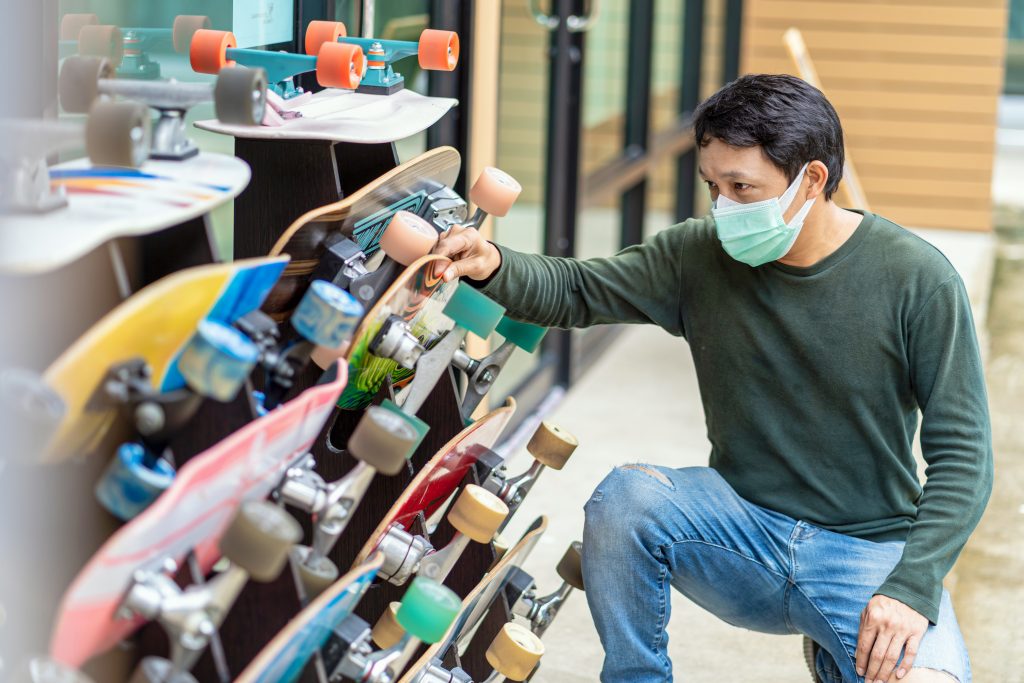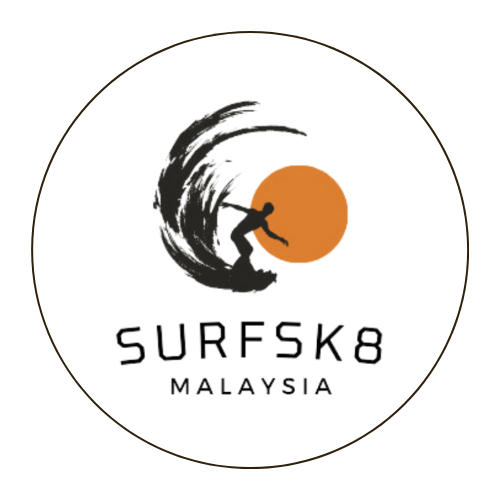Navigating the Surfskate Universe: A Comprehensive Guide for Beginners
The realm of surfskating is experiencing an exhilarating surge in popularity, captivating a growing number of enthusiasts. This vibrant surge has brought forth an abundance of options from various brands, enriching a market landscape that had long been the domain of Carver. However, the profusion of choices can sometimes leave surfskate beginners bewildered, struggling to navigate the complexities. Explore this vibrant world with our comprehensive guide for surfskate beginners.
For those unfamiliar with the world of skating, the allure of eye-catching graphics can often be misleading. Thus, we present a concise guide that encapsulates all the crucial aspects to consider before delving into the realm of surfskating. Armed with this knowledge, you can sidestep the pitfalls of erroneous purchases and avoid finding yourself with a board too advanced for your novice skills or divergent from your surfing style – or, even worse, a board that’s the wrong fit.
1. Decoding the Essence of Surfskating
At its core, a surfskate is a bridge between the art of surfing and the skateboarding arena. It’s more than just a passing connection; it’s a special craft with a distinctive front truck that emulates the fluid movements of a surfboard gliding through water. This unique setup empowers surfskaters with the ability to execute sharp turns and emulate traditional surfing maneuvers, all while riding on wheels.
What sets surfskating apart is the fluidity it grants in motion. It’s a ride that can be propelled forward without necessitating a foot on the ground. Unlike traditional longboards, surfskates can tackle flat surfaces and even modest inclines. Additionally, surfskates offer remarkable agility, enabling seamless maneuverability around tight corners and obstacles with a mere shift in weight.
2. Elevating Fitness through Surfskating
For avid surfers, a significant portion of surf sessions is spent paddling or waiting for the right wave. In a typical session, around 70% of the time is dedicated to paddling, while only 30% involves riding the wave. Catching a wave provides but a fleeting window to execute maneuvers. This fleeting nature often hampers the consolidation of desired movements into muscle memory.
Enter the surfskate – a dynamic tool that lets you hone top turns and bottom turns at will. It facilitates the pumping motion, akin to generating speed as in wave riding while offering a prolonged practice environment. These benefits novices seeking improved balance and veterans aspiring for greater radicalism alike.
3. Universality of Surfskating
Surfskating’s appeal isn’t confined to surfers alone. While surfers leverage surfskates to refine their skills, skateboarders also flock to this domain for the excitement of exploring a distinct discipline. Unlike the gradual learning curve often associated with surfing, surfskating is more intuitive and approachable, allowing for instant enjoyment.
Whether you’re yearning for an interlude between surf trips, desiring skill enhancement, or simply chasing an exhilarating cruising experience, a surfskate is your ideal companion.
4. Distinctiveness Defined: Surfskate vs. Longboard
Surfskates and longboards each boast a unique front truck configuration, fundamentally shaping their respective rides. Surfskating movements closely mirror surfing dynamics, setting it apart from both longboarding and conventional skateboarding.
Notably, the pumping technique – a foundational motion of surfskating – starkly contrasts with other skateboarding variants in terms of exertion and complexity. Furthermore, surfskates feature narrower, more agile turns courtesy of their specialized trucks.
Yet, surfskates aren’t tailored for acrobatics, jumps, or strenuous tricks synonymous with skateboarding. Their weight and design render them unsuitable for repeated high-impact landings, and their swaying nature poses challenges for stable landings.
Moreover, for speed enthusiasts and long-distance seekers, longboards remain the superior choice.

5. Differentiation Among Surfskates
Indeed, surfskates aren’t cut from the same cloth. Discerning the differences between brands and models can be daunting. To illuminate this landscape, we’ll juxtapose Carver with other prevalent surfskate offerings. This comparative approach aids not due to Carver’s supremacy, but rather its prominence, which serves as a reference point for evaluation.
6. Sizing Up Your Surfskate
Selecting the right surfskate size hinges on variables like height, weight, preferred style, and skill level. In broad strokes, shorter and lighter riders tend to favor shorter boards, while taller and heavier riders gravitate toward longer options. However, exceptions abound: a lofty individual eyeing an urban Mini Cruiser Surfskate might opt for a compact 30″ board. Similarly, a weightless rider yearning for sweeping curves and extended rides might lean towards a lengthier model. In essence, the selection process parallels choosing a surfboard or longboard – it’s less about proficiency and more about aligning with your unique style.
Here is the table for reference:
| Height rider | Weight rider | Surfskate length |
|---|---|---|
| Children and young people up to 155cm | 25kg – 55kg | up to 30 “ |
| 150cm – 170cm | 40kg – 75kg | 27 – 31 “ |
| 160cm – 181cm | 50kg – 85kg | 30 – 32 “ |
| 165cm – 187cm | 60kg – 90kg | 31 “- 33” |
| 175cm – 193cm | 70kg – 100kg | 32 “- 35” |
| 182cm – 203cm | 85kg – 120kg | 34 “- 39” |
7. Pacing Your Steps: The Surfskate Stance
The spacing of your feet – your step – significantly shapes your surfskate experience. It dictates the turning radius and overall behavior of the board. A front foot situated comfortably behind the front truck, along with a rear foot above the rear truck, forms the optimal stance. This configuration is pivotal for achieving precise, controlled turns and mastering the intricate subtleties of surfskating.
Intricately intertwined with the wheelbase, your step forms the linchpin for crafting the ideal ride.
8. Tailoring Your Choice to Skill and Style
For Aspiring Surfskaters:
If you’re venturing into the realm of surfskating without prior experience in longboarding, skateboarding, or surfskating itself, worry not. Starting from scratch, regardless of your age, is entirely feasible and rewarding. With practice, you’ll swiftly grasp the pumping technique and finesse your curves. Progress is tangible after just a handful of sessions, and rapid learning is an inherent promise.
As a newcomer, comfort finds its home on a stable board. Opt for a lengthier, wider board boasting a substantial wheelbase. Embrace safety with a helmet, hand protection, and knee pads.
For the Seasoned Practitioner:
Experienced in surfskating, surfing, or engaged with longboards or skateboards? The path to mastering any surfskate board is remarkably short. Your proficiency will propel you through the learning curve, helping you quickly embrace the intricacies of a new board.
9. A Playground for the Young: Surfskating for Kids
Skating, in its entirety, unfurls as a delightful pursuit for children and adolescents – and surfskating is no exception. In fact, surfskating offers an edge over traditional skating due to its larger dimensions, which augments stability for novices. Learning pumping becomes a breeze, absent the need for ramps or descents – a simple open space is your playground.
For young enthusiasts, surfskating doubles as a remarkable surf training ground. It accelerates takeoff skill acquisition and further hones posture, technique, and balance.
Conclusion:
In conclusion, surfskating beckons as an exhilarating fusion of surfing and skateboarding, offering novices and seasoned skaters an innovative avenue to explore. Armed with this comprehensive guide, you’re primed to step onto the surfskating scene with clarity and confidence. Whether you’re chasing waves or simply seeking a dynamic cruising experience, the world of surfskating eagerly awaits your arrival.
